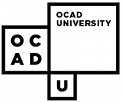presented by
Jim Allan & Jutta Treviranus
1. Introduction
- Presentors
- Jim Allan, Statewide Technical Support Specialist
Texas School for the Blind and Visually Impaired
1100 W. 45th St.
Austin, Texas 78756
TEL: 512-206-9315 FAX: 512-458-3395
EMAIL: This email address is being protected from spambots. You need JavaScript enabled to view it.
Website: http://www.tsbvi.edu - Jutta Treviranus, MANAGER
Adaptive Technology Resource Centre
University of Toronto
First Floor
130 St. George St.
Toronto, Ontartio
Canada M5S 3H1
TEL: (416) 978-5240 FAX: (416) 971-2896
EMAIL: This email address is being protected from spambots. You need JavaScript enabled to view it.
Website: http://idrc.ocad.ca
- Jim Allan, Statewide Technical Support Specialist
2. What are cascading style sheets?
A simple mechanism for specifying style (e.g. fonts, colors, spacing, etc.) for web documents.
- Separating presentation from content and structure!
- Types of style sheets
- embeded
- linked
- inline
- imported
- Who has control (designer vs. viewer)?
- What does cascading mean?
- nesting
- inheritence
- aggregrate styles
- graceful degradation
3. Benefits of CSS
- For the author
- author control of: color, typography, element placment (margins, indents, drop caps, leading)
- cleaner coding, no longer need HTML workarounds: e.g., one-pixel GIFS, invisible table borders, invisible text for spacing
- quick and easy style changes to an entire site
- rather than designing to "lowest" common denominator can accomodate multiple views
- can expoit ready to use style sheets
- authors can concentrate on content and structure and use existing style sheets to make pages look good
- For the user
- authors can code better. Less HTML tricks = better accessibility
- no more tables used to format a page
- less need for graphic headlines or other graphics with text
- control over YOUR preferences: color, typography, element placment (margins, indents, drop caps, leading)
- presentation of pages based on your access needs: using aural style sheets (ACSS), or braille style sheets (when it is developed)
- may improve printing
- authors can code better. Less HTML tricks = better accessibility
4. Browser Support of CSS
- Internet Explorer 3.01, 4.x
- Netscape Communicator 4.x
- Opera (Europe)
- Sensus (soon to be released)
- pwWebspeak
- Emac Speak (Unix)
5. Authoring Tool Support of CSS
- http://www.w3.org/Style/css/#editors
- http://www.microsoft.com/truetype/css/gallery/cssinf5.htm
- levels of support
6. Implications for Users with Various Disabilities
- low vision
- text size
- link text color
- line spacing
- indent
- text and background color
- table cell layout and format
- thicken anchored IMG borders
- Braille- BrailleCSS Action Item: Requirements Document by the World Wide Web Consortium (W3C)
- Audio- Aural Cascading Style Sheets (ACSS) Draft proposal concerning the aural (auditory) presentation of web based materials.
- Physical Disability
- link size
- spacing
7. How to Write a CSS
- - using a text editor
- - example utility -LPCSS editor
- - CSS checker
CSS Resources
- Web Style Sheets - style sheet information from the W3C. Good example of style usage. Excellent source of latest information and tools.
- CSS1 support in Microsoft Internet Explorer 3 - the title says it all.
- D.J. Quad's Ultimate Style Sheets Tutorial - basic introduction to style sheet
- CSS - Cascading Style Sheets - a list of articles related to style sheets by builder.com
- Project Cool Developer Zone tutorials - warning! frames. reference of style tags, browser implementation, and examples
- Style Sheets Guide Index Page - comprehensive site(refers to IE3beta1)
- Web Designer's Guide to Style Sheets - website for book by the same name. Author: Steven Mulder. ISBN: 1-56830-306-8.
- Web Design Group -- Cascading Style Sheets - excellent site, tutorial, structure and rules, properties, references, and a style sheet syntax checker.
- CSSCheck, a Cascading Style Sheets Lint - check any style sheet for proper syntax, and compatibility with browsers
- Microsoft -- User's Guide to Style Sheets - links to many documents related to style sheets and Microsoft products.
- Effective Use of Cascading Style Sheets (Alertbox July 1997) - good philosopy from Jakob Neilson.
- news:comp.infosystems.www.authoring.stylsheets - usenet newgroup focusing on style sheets
- W3C Cheat Sheet - searchable application for HTML, JavaScript, CSS, SVG, XPath
- Eric Meyer: CSS - Eric Meyer's page about style sheets.
- Cascade - CSS editor for the Macintosh
FREE Demonstration Software
- A copy of the Large Print CSS Editor software that was demonstrated during this presentation is now available at: CSSedit.zip

